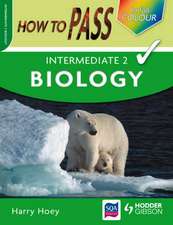Sergei Vinogradskii and the Cycle of Life: From the Thermodynamics of Life to Ecological Microbiology, 1850-1950: Archimedes, cartea 34
Autor Lloyd Ackerten Limba Engleză Hardback – 30 oct 2012
| Toate formatele și edițiile | Preț | Express |
|---|---|---|
| Paperback (1) | 553.54 lei 38-45 zile | |
| SPRINGER NETHERLANDS – 9 noi 2014 | 553.54 lei 38-45 zile | |
| Hardback (1) | 561.42 lei 38-45 zile | |
| SPRINGER NETHERLANDS – 30 oct 2012 | 561.42 lei 38-45 zile |
Din seria Archimedes
- 5%
 Preț: 909.01 lei
Preț: 909.01 lei - 18%
 Preț: 899.21 lei
Preț: 899.21 lei - 18%
 Preț: 785.55 lei
Preț: 785.55 lei -
 Preț: 382.36 lei
Preț: 382.36 lei - 18%
 Preț: 1833.33 lei
Preț: 1833.33 lei - 15%
 Preț: 643.84 lei
Preț: 643.84 lei - 18%
 Preț: 951.77 lei
Preț: 951.77 lei - 15%
 Preț: 645.79 lei
Preț: 645.79 lei - 15%
 Preț: 644.30 lei
Preț: 644.30 lei - 20%
 Preț: 577.17 lei
Preț: 577.17 lei - 18%
 Preț: 1108.04 lei
Preț: 1108.04 lei - 15%
 Preț: 646.62 lei
Preț: 646.62 lei - 18%
 Preț: 1110.09 lei
Preț: 1110.09 lei - 18%
 Preț: 1216.65 lei
Preț: 1216.65 lei - 18%
 Preț: 730.02 lei
Preț: 730.02 lei - 18%
 Preț: 1552.22 lei
Preț: 1552.22 lei - 18%
 Preț: 891.48 lei
Preț: 891.48 lei - 18%
 Preț: 776.88 lei
Preț: 776.88 lei - 18%
 Preț: 1214.60 lei
Preț: 1214.60 lei - 18%
 Preț: 1113.26 lei
Preț: 1113.26 lei - 18%
 Preț: 777.69 lei
Preț: 777.69 lei - 18%
 Preț: 995.83 lei
Preț: 995.83 lei - 15%
 Preț: 635.47 lei
Preț: 635.47 lei - 24%
 Preț: 1459.25 lei
Preț: 1459.25 lei - 18%
 Preț: 948.47 lei
Preț: 948.47 lei - 18%
 Preț: 1666.97 lei
Preț: 1666.97 lei - 18%
 Preț: 1114.83 lei
Preț: 1114.83 lei - 15%
 Preț: 645.60 lei
Preț: 645.60 lei
Preț: 561.42 lei
Preț vechi: 701.78 lei
-20% Nou
Puncte Express: 842
Preț estimativ în valută:
107.44€ • 112.03$ • 89.29£
107.44€ • 112.03$ • 89.29£
Carte tipărită la comandă
Livrare economică 17-24 martie
Preluare comenzi: 021 569.72.76
Specificații
ISBN-13: 9789400751972
ISBN-10: 9400751974
Pagini: 212
Ilustrații: XVIII, 194 p.
Dimensiuni: 155 x 235 x 17 mm
Greutate: 0.43 kg
Ediția:2013
Editura: SPRINGER NETHERLANDS
Colecția Springer
Seria Archimedes
Locul publicării:Dordrecht, Netherlands
ISBN-10: 9400751974
Pagini: 212
Ilustrații: XVIII, 194 p.
Dimensiuni: 155 x 235 x 17 mm
Greutate: 0.43 kg
Ediția:2013
Editura: SPRINGER NETHERLANDS
Colecția Springer
Seria Archimedes
Locul publicării:Dordrecht, Netherlands
Public țintă
ResearchCuprins
Bibliography Acknowledgements.- Introduction.- Part I. Plant Physiology.- Chapter 1. A Synthesis of Thermodynamics and Bioenergetics in Plant Physiology: The Investigation of a Moody Apprentice.- Part II Experiment and Natural History.- Chapter 2: The Exchange of Matter and the Transformation of Energy.- Chapter 3. The Laboratory is Nature: Investigating the Cycle of Life under the Microscope.- Chapter 4. Free Nature in the Laboratory.- Part III. Ecology.- Chapter 5. Vinogradskii’s Transformation from Plant Physiologist to Ecologist, 1890-1920.- Chapter 6 - Soil Science and Russian Ecology.- Part IV. French Agriculture.- Chapter 7. The Master of Brie-Compte-Robert and his ‘Direct Method:’ Translating the Cycle of Life into Ecology.- Chapter 8. Ecological Microbiology.- Part V. The Impact of Vinogradskii’s Work.- Chapter 9. Science is Ecological and Ecology is Scientific: The Uptake of Vinogradskii’s Direct Methods.- Chapter 10. Vinogradskii’s Reception in Russian and Soviet Microbiology Chapter 11. Conclusions.- Bibliography.
Recenzii
From the book reviews:
“The book is an important contribution to our picture of shifting disciplinary boundaries, as well as to discussions of the not-so-black-and-white distinction between field science and lab science. … it complicates our understanding of the streams of thought and methodology that blended into ecology and into Vernadsky’s biogeochemistry by 1920 or so. Thus, it is an important contribution to environmental history–particularly restoring the cycle of life concept to the narrative–as well as to the history of biology.” (James Strick, Studies in History and Philosophy of Biological and Biomedical Sciences, Vol. 48, 2014)
“The book is an important contribution to our picture of shifting disciplinary boundaries, as well as to discussions of the not-so-black-and-white distinction between field science and lab science. … it complicates our understanding of the streams of thought and methodology that blended into ecology and into Vernadsky’s biogeochemistry by 1920 or so. Thus, it is an important contribution to environmental history–particularly restoring the cycle of life concept to the narrative–as well as to the history of biology.” (James Strick, Studies in History and Philosophy of Biological and Biomedical Sciences, Vol. 48, 2014)
Notă biografică
t.
Textul de pe ultima copertă
This is one of those biographies that provide a window onto the broader understanding of science in its social and cultural context. Using Sergei Nikolaevich Vinogradskii’s career and scientific research trajectory as a point of entry, this book illustrates the manner in which microbiologists, chemists, botanists, and plant physiologists inscribed the concept of a “cycle of life” into their investigations. Their research transformed a longstanding notion into the fundamental approaches and concepts that underlay the new ecological disciplines that emerged in the 1920s. The book presents a reconstruction of significant episodes of Vinogradskii’s laboratory practices and the role of theory in their development. It paints the broader picture of the history of ecology, microbiology and soil science and how these are uniquely united: through the concept of the cycle of life.
Caracteristici
First book to place Winogradsky's work in a broad historical and scientific context Based on a close reading of scientific and archival sources Unites a unique biography with history of history of ecology ?



